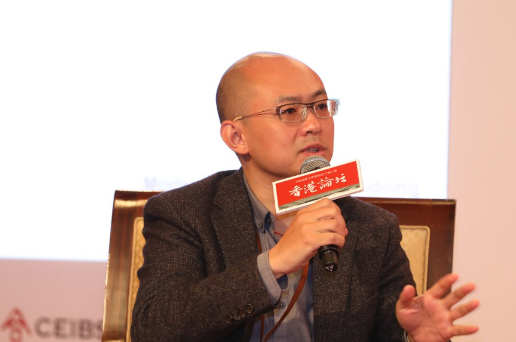Should I invest in AI?

Huang He,
Partner, Northern Light Venture Capital
What are the investment opportunities available in the sphere of smart manufacturing? Should you be investing in AI? How have falling wage prices and work habits of the post-90s generation impacted robotics? Answers from a leading executive at a VC firm that handles about RMB10 billion in assets.
“We are a 10-year-old venture capital fund, managing about RMB10 billion in assets and running nine funds. We have different kinds of funds, both in RMB and US dollar.
Smart intelligence is a very hot topic nowadays, unlike 10 years ago. But we began investments in this area very early, so we are kind of like first movers and we have accumulated a lot of experience.
For example I’m very familiar with the Midea-KUKA acquisition; I knew about the deal before it was made public and I know their reasons for the acquisition of this robotics company.
Six to seven years ago I looked into a company that, like Midea, was also in the white goods industry. They were, and still are, located in the Pearl Delta Area and Yangtze Delta Area. When I talked to them then, they gave me several reasons why they didn’t need robotics. They knew their companies very well and business was good; and the cost of using robotics was very high.
For example, then you might have needed RMB200,000 to RMB300,000 to buy six robots. One robot could replace two teams of people. One person was about RMB3,000 per month. So the robots were much more expensive; it wasn’t a good deal.
Three to four years ago, I asked the same question to the same group of people, but the answer was different because, first of all, labour costs have been increasing. That’s why we see many enterprises moving to neighbouring Asian countries.
But the more important reason is that employees born after the 1990s are very different. We did a lot of research on this. They don’t like to repeat the same tasks day after day. They would rather be supported by their parents than do boring jobs in factories.
So labour costs are higher and people are more reluctant to work. And the turnover rate is very high because, after the training is over, they tend to leave after two to three months of work. That’s why robots are now necessary for factories.
The cost of robots used to be very high because of the lack of producing capacity, because nobody wanted them – and also because the key components in a robot had to be imported from Japanese companies. The cost in Japan was very low but it became very high in China. So with all these factors combined together it wasn’t a good idea to use robots a few years ago; but things have been changing now.
We now have local manufacturers of robots in the Chinese market. They can’t 100% replace Japanese-made robots, maybe about but 70%; and they cost RMB30,000. Economically it now makes sense to use robots.
So this is a trend nowadays, it’s been accepted by major players in manufacturing, otherwise they can’t survive in this environment. They need it now and also for their future development.
Investing in AI
Almost everybody is investing in AI and relevant industries now. We believe there’s a huge bubble in the sector. In the next two to three years maybe the survival rate of companies in this field will be less than 50%, and that’s a very conservative estimate. We are familiar with Horizen, a start-up that produces an overall solution based on high technology and smart technology. I think this is very good.
But there is one area of uncertainty: implementing the solution in the market is the trickiest thing. Of course we can have tests but this does not mean it automatically translates into a good business model. So my prediction is that in the next two to three years 50% of the [AI] companies we see now will be out of the picture.”
Edited excerpts from a panel discussion on Opportunities for Entrepreneurship and Investment in the Smart Manufacturing Industry at CEIBS Hong Kong Forum on April 21, 2017.
Click the links below for more details as they become available on CEIBS Europe Forums in:
London – July 6
Paris – July 11
Munich – September 13
Warsaw – September 15
Zurich – October 18.













